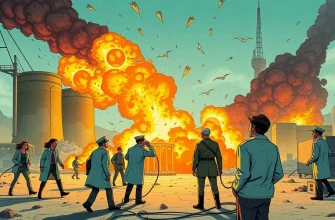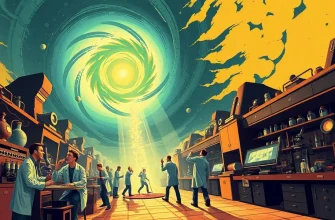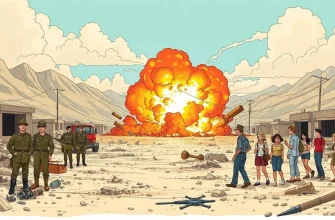Are you fascinated by the edge-of-your-seat tension that comes from military experiments gone awry? This curated list of disaster films focuses on the catastrophic consequences of military testing, offering a thrilling mix of suspense, action, and often, a touch of the unknown. From nuclear mishaps to biological disasters, these films not only entertain but also provoke thought about the ethical boundaries of military science. Whether you're a fan of intense drama or just love a good explosion, this collection is sure to keep you on the edge of your seat.

The Day of the Triffids (1962)
Description: Although not strictly about a military testing ground, this film features a biological disaster where carnivorous plants, possibly a result of genetic experiments, take over after a meteor shower blinds most of humanity.
Fact: The film was adapted from John Wyndham's novel and has inspired numerous remakes and adaptations.
 Watch Now
Watch Now

The Andromeda Strain (1971)
Description: This film involves a biological disaster originating from a military satellite, which crashes in a small town, leading to a deadly outbreak. It's a classic tale of science gone wrong.
Fact: The film was based on Michael Crichton's novel, which was inspired by real-life concerns about biological warfare.
 Watch Now
Watch Now

The Omega Man (1971)
Description: This post-apocalyptic film features a biological weapon test gone wrong, leading to a world where the last man alive fights against mutated survivors. It's a chilling vision of military experimentation's aftermath.
Fact: It's based on Richard Matheson's novel "I Am Legend," which has been adapted multiple times.
 Watch Now
Watch Now
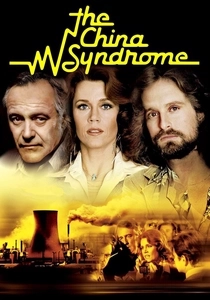
The China Syndrome (1979)
Description: While primarily about a nuclear power plant, the film's tension arises from the fear of a meltdown, which could be seen as a result of military testing gone wrong. It's a gripping drama with real-world implications.
Fact: The film's release eerily coincided with the Three Mile Island nuclear accident, enhancing its impact.
 Watch Now
Watch Now

The Peacemaker (1997)
Description: This action thriller involves a nuclear device stolen from a military testing site, leading to a race against time to prevent a catastrophe. It's a high-stakes adventure with a focus on military technology.
Fact: The film was one of the first to explore the theme of nuclear terrorism in a post-Cold War context.
 Watch Now
Watch Now

The Sum of All Fears (2002)
Description: While not exclusively about a military testing ground, this film features a nuclear bomb test that goes horribly wrong, leading to a global crisis. It's a gripping tale of political intrigue and disaster.
Fact: The film's plot was inspired by real fears of nuclear terrorism during the Cold War era.
 Watch Now
Watch Now
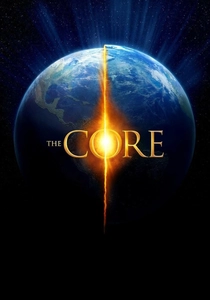
The Core (2003)
Description: Although not directly about a military testing ground, it features a disastrous experiment that leads to a team being sent to the Earth's core, showcasing the unintended consequences of scientific testing.
Fact: The film's premise was inspired by the real-world concept of the Earth's magnetic field and its potential collapse.
 Watch Now
Watch Now
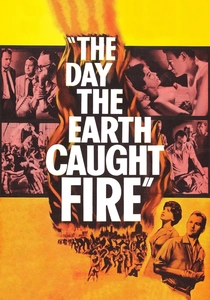
The Day the Earth Caught Fire (1961)
Description: This British film explores the aftermath of simultaneous nuclear tests by the U.S. and the USSR, which tilt the Earth's axis, causing global chaos. It's a unique take on the disaster genre.
Fact: The film was shot in black and white, with color used only for the opening and closing sequences to symbolize the world before and after the disaster.
 30 Days Free
30 Days Free
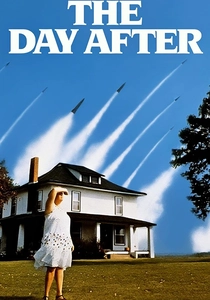
The Day After (1983)
Description: This TV movie depicts the aftermath of a nuclear war, with a significant portion focusing on the chaos at a military testing ground. It's a stark reminder of the potential consequences of nuclear testing.
Fact: The film was so impactful that it influenced President Reagan's views on nuclear war, leading to a shift in U.S. nuclear policy.
 30 Days Free
30 Days Free

Fail-Safe (1964)
Description: This film deals with a nuclear crisis caused by a technical glitch in a military testing scenario, leading to a tense standoff between superpowers. It's a sobering look at the potential for human error in military operations.
Fact: The film was released in the same year as "Dr. Strangelove," offering a more serious counterpoint to the satirical take on nuclear war.
 30 Days Free
30 Days Free


